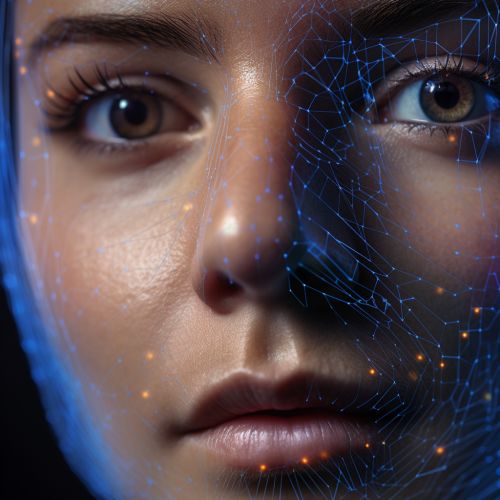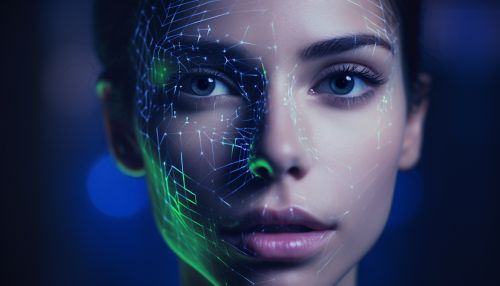Facial Recognition
Overview
Facial recognition is a biometric technology that uses distinctive features on the face to identify or verify a person's identity. The technology has been used in a variety of security and surveillance applications, as well as in more recent consumer applications such as unlocking smartphones and tagging photos on social media.


History
The concept of facial recognition dates back to the 1960s, with the earliest systems relying on human operators to identify facial features. The first automated facial recognition system was developed in the 1970s by Woodrow Wilson Bledsoe, who created a system that could classify photos of faces using a grid that measured distances between key facial features.
Technology
Facial recognition technology works by comparing selected facial features from a given image with faces within a database. It first detects a face in the image, then analyzes the facial features to create a facial signature, a mathematical formula that represents the face's unique characteristics. This signature is then compared with the facial signatures in a database to find a match.
Types of Facial Recognition Systems
There are several types of facial recognition systems, including 2D, 3D, and thermal systems.
2D Systems
2D systems are the most common type of facial recognition system. They work by comparing the subject's facial features with those in one or more photographs. These systems are typically used in controlled environments where lighting and pose can be easily manipulated.
3D Systems
3D systems create a 3D model of the subject's face, which allows for more accurate comparisons than 2D systems. These systems can also account for changes in lighting and pose, making them more versatile than 2D systems.
Thermal Systems
Thermal systems use infrared cameras to capture the heat patterns generated by blood vessels under the skin. These patterns are unique to each individual and can be used to identify or verify a person's identity.
Applications
Facial recognition technology has a wide range of applications, from security and surveillance to consumer electronics.
Security and Surveillance
In security and surveillance, facial recognition is used to identify individuals in a crowd, track a person's movements, or verify a person's identity. This can be used in a variety of settings, from airports and border crossings to stadiums and public events.
Consumer Electronics
In consumer electronics, facial recognition is used to unlock smartphones, personalize user experiences, and tag photos on social media.
Healthcare
In healthcare, facial recognition can be used to identify patients, track medication usage, and monitor patient health.
Privacy Concerns
While facial recognition technology has many benefits, it also raises significant privacy concerns. Critics argue that the technology can be used to track individuals without their consent, and that it could be used by governments or corporations to infringe on individual privacy rights.
Future of Facial Recognition
As facial recognition technology continues to improve, it is likely to become more prevalent in our everyday lives. However, as the technology becomes more widespread, it is also likely that regulations will be put in place to protect individual privacy.
